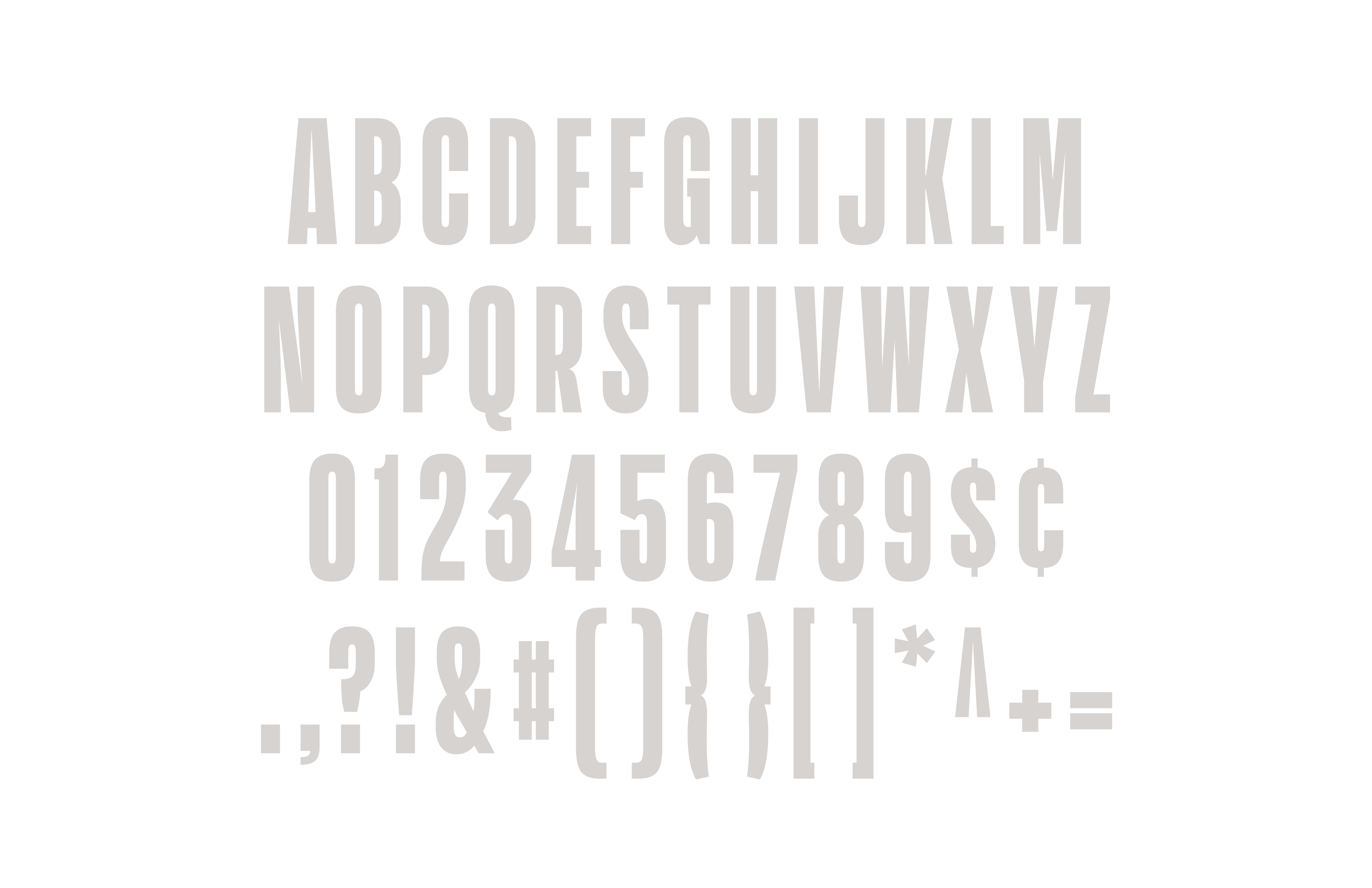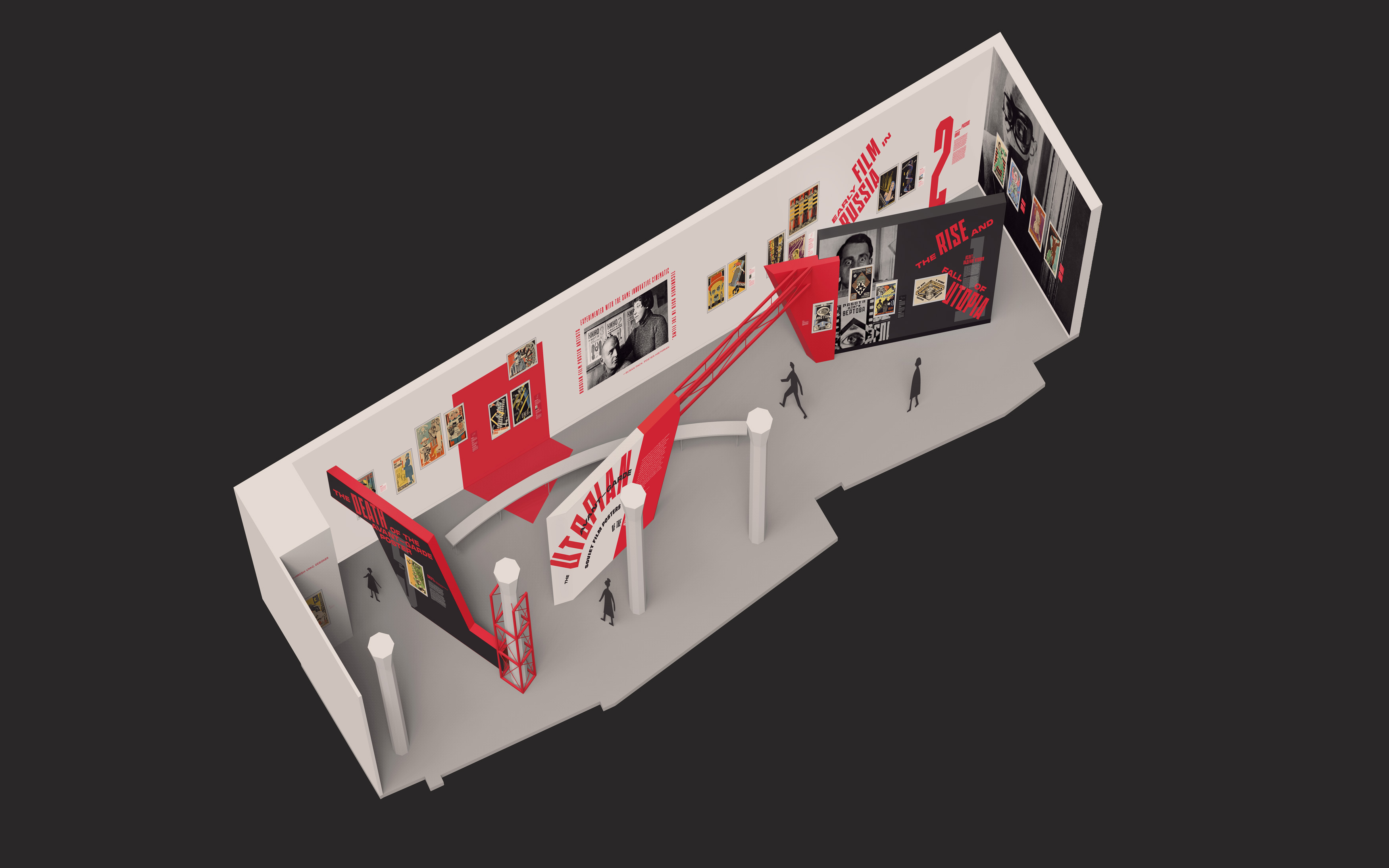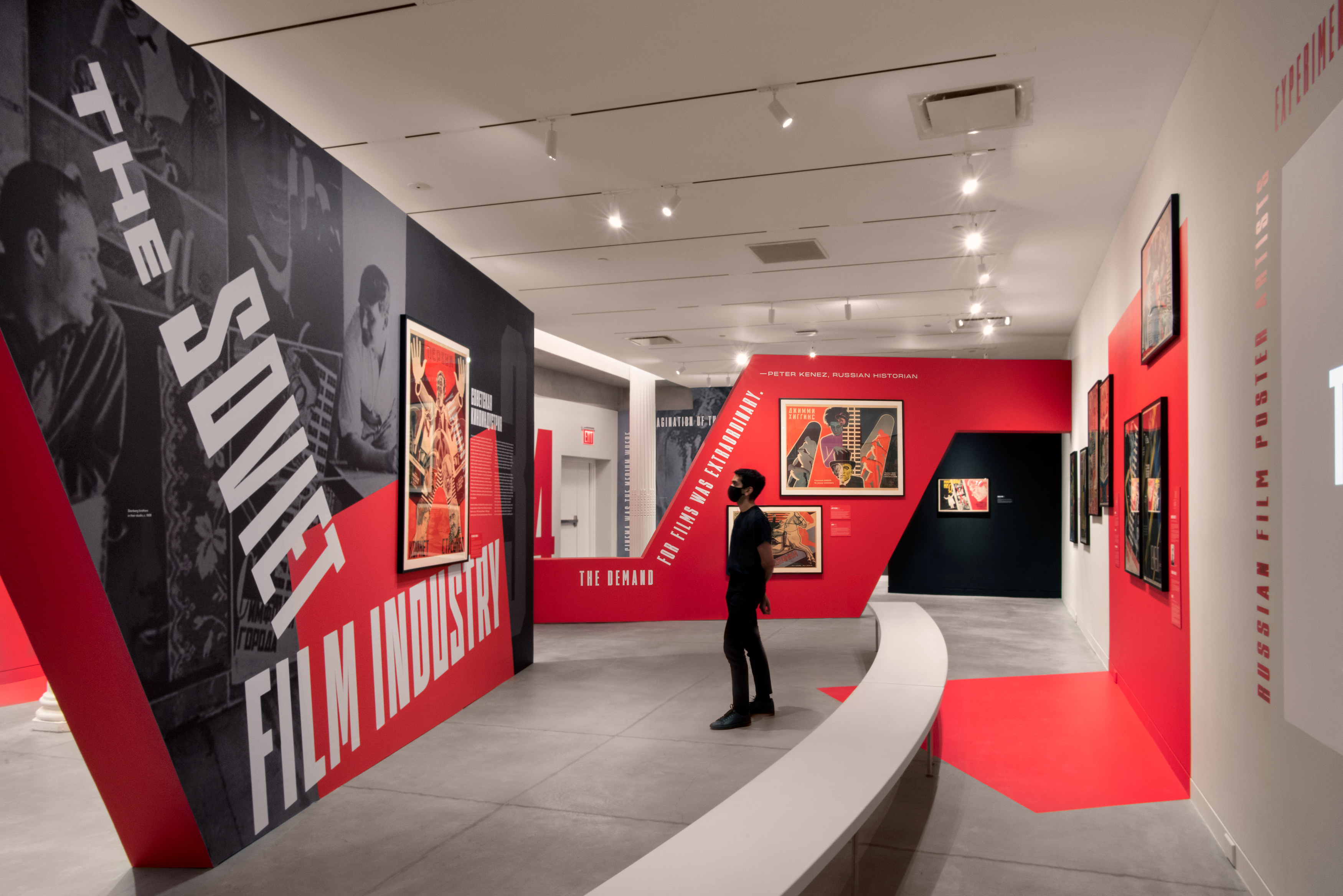The Utopian Avant-Garde: Soviet Film Posters of the 1920s
Visual Identity, Exhibition, Architecture
Exhibition of rare Soviet Constructivist posters at Poster House, the only museum in the U.S. dedicated to posters
Framing a revolutionary period of poster design
Isometric collaborated with Poster House to design the visually dramatic and historically imperative exhibition The Utopian Avant-Garde: Soviet Film Posters of the 1920s. The 2300 sq. ft. installation explores the origins, high points, and eventual demise of this golden age of Soviet graphic design, showcasing the work of Alexander Rodchenko, the Stenberg brothers, Semyon Semyonov, and more. The design creates an immersive world to contextualize the posters of this era, surrounding the visitor in Constructivist-inspired architecture and typography. Sweeping graphics soar overhead and extend off the walls to the floor, creating a space that elevates both the works and the mission of the museum.
Photo by Stephanie Powell, Courtesy of Poster House

Historically evocative, visually immersive
For the exhibition’s principal display typography, Isometric created a custom, square version of Action Condensed Bold for both the Latin and Cyrillic scripts. The resulting font, Constructivist Square, is used throughout for grand moments of drama and contrast, as well as for finer nuances and descriptive details. Bold, red highlights within the architecture and graphic design create visual interest and three dimensionality, while simultaneously providing a sense of place and period. From a sweeping curvilinear bench to intimate framing moments created by the architecture, every detail aligns to amplify the curatorial vision. The monumental architecture, custom typography, and animation all work to contextualize and uplift the dynamic, experimental, and explosive posters on view.


Celebrating radical, utopic imagination
In a brief historical interval between Lenin and Stalin, idealistic, young posters artists from present-day Ukraine, Georgia, Sweden, and Russia dreamt of a better world. Film became a key instrument of state-sponsored propaganda, and the poster became a canvas for inventive visual experiments to express progressive modernity, albeit in an environment of chaos and censorship. The exhibition architecture deploys trusses and angular shapes, celebrating this youthful, avant-garde spirit with a dynamic space that is always in the process of construction. This environment contextualizes the posters—some of the rarest and most famous works in the graphic design canon—within the ethos and visuality of the poster artists’ radical imagination, which has inspired generations of designers since.



















